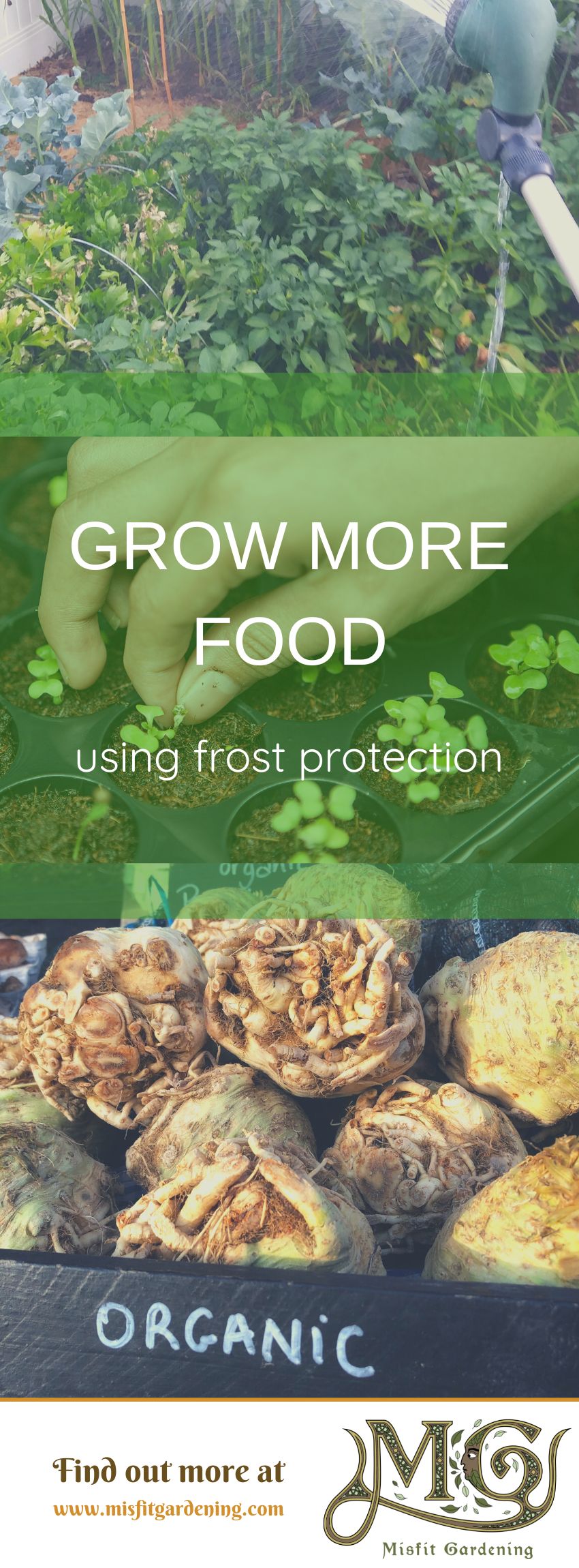Celeriac might be the ugly duckling of vegetables but it is one underrated vegetable that you might want to grow!
This post contains affiliate links: I am grateful to be of service and bring you content free of charge. In order to do this, please note that when you click links and purchase items; in some (but not all) cases I will receive a referral commission. Your support in purchasing through these links enables me to keep blogging to help you start homesteading and it doesn’t cost you a penny extra!
See Disclosure, Terms and Conditions for more information. Thank you for supporting Misfit Gardening.
Join over 150,000 gardeners and homesteaders and listen to the popular Homesteading & Gardening In The Suburbs Podcast or read on to learn more!
How To Grow Celeriac From Seed
I wanted to talk about a vegetable that is very underappreciated and there are not a lot of varieties out there to buy. I’m talking about celery root or celeriac.
There are a couple of varieties available to grow from some of the bigger seed companies like Giant Prague, Mars, Brilliant, and the one I’m growing this year, Monarch. I was disappointed when looking through the Seed Savers Exchange Yearbook this year that there was no celeriac there! You know how I like to grow different varieties of plants to create varieties that grow well on my homestead, but I also like to do my part to help preserve heirloom varieties and help grow them to adapt to my climate here in Maine.
Unfortunately, this vegetable is one where seed catalogs drop and it is likely due to the fact it isn’t popular for gardeners to buy. So I wanted to tell you about this vegetable to bring celeriac out of the seeds to drop list and into the light!
What Is Celeriac?
Celeriac is grown for its swollen root. It’s like a rutabaga or swede in size but the knotty root looks like something out of a Lovecraft novel rather than the smooth tapered root of a rutabaga. It has a mild celery flavor and works well in slaw, soup, and a mixed winter root veg roasted vegetable side. The leaves can also be used to flavor dishes. I use it the most in a seasonal fall soup with leeks, potato, garlic and onion, salt, and pepper. Simple but delicious! Cutting the root into chips, small wedges or fries then baked and served with a twist of lemon, salt, and pepper is also good. The first time I was introduced to celeriac was when I was about 12 at a friend’s house and birthday. Celeriac has been a favorite of mine ever since.
This is one of those plants that grows well in cooler weather and is quite common in the UK on allotments, grocery stores and farmer’s markets but quite hard to find in the average grocery store here in the US and when you do find them, they are the size of a tennis ball for a ridiculous price. Celeriac stores well if you are looking for veggies that can be stored in a root cellar and is part of the celery family or Apium graveolens if you are wanting the binomial name.
The Diverse Celery Family
The celery family is actually made up of 3 types, the crisp stalky celery, smallage or leaf celery grown for the leaves used to season soups, stews, and casseroles, and celeriac which is grown for its roots. There are texts recording the use of this family of plants more than 3000 years ago and has been domesticated in China since around the fifth century. Cultivated celery was first mentioned in a French publication in the 1600s and the cultivation of celeriac was documented in Europe around the same time.
Growing a garden offers you so many more opportunities to eat something different or grow something that’s expensive or hard to get at the grocery store.
Sowing Celeriac Seeds
Let’s talk about starting celeriac from seed. It’s one of those plants that can take a long time to germinate and is slow to grow. Starting seed indoors up to 10 weeks before your last frost date in spring is ideal so you can transplant seedlings after the risk of frost has passed. You want to sow the seed thinly on your seed starting tray or use one seed per module if you are using the trays with individual modules as I do and barely cover it with some sifted seed starting mix. Keep the soil moist and use a humidity dome or a clear plastic bag to keep the humidity high to help those seeds germinate.
Once the seeds have germinated get them under grow lights quickly and keep the lights low so the seedlings don’t get leggy and spindly. Celeriac needs the temperature to be warmer than 55F/12C or the plants will think they are going through winter and will focus on bolting and making seeds rather than the swollen tasty root. So use a heat mat if your seed starting area is cool like it is at my house.
You will want to plan for about 2 or 3 celeriac plants per person for a growing season.
Transplanting Celeriac
When your seedlings have their first set of true leaves, not the rounded baby leaves but their actual big plant leaves you will want to carefully transplant them into a bigger container like a 4 inch nursery pot so they can keep growing into bigger plants ready for transplanting after the last frost.
Celeriac will take about 120 days from transplanting to reach maturity so make sure you choose the best site to grow it in! It prefers a sunny location in the garden but will tolerate some shade. The soil needs to be rich in compost or well-rotted manure. Celeriac is a pretty hungry crop and will need regular additions of compost as a mulch around the plants every couple of weeks and will definitely appreciate some homemade liquid fertilizers from comfrey or stinging nettle as well.
Care of Celeriac
For those of you that are companion planting, peas, lettuce, and spinach work well as companions early in the growing season but avoid planting your squashes, pumpkins, melons and cucumbers near your celery root. You can also plant flowers nearby or green manure like buckwheat or a soil-building mix to provide a buffer between your celeriac and other garden plants.
Your celery root plants are pretty shallow and can dry out quickly in summer. A lack of moisture will lead to tough plants. So keep your plants watered regularly and use a thick mulch to help conserve moisture in the soil. When weeding, be careful if you are using a how to avoid damaging the roots of your celeriac. Mulching thickly will not only help keep the water in the soil but it will also reduce the weeds and help blanch the swollen root of the celeriac plants too.
In terms of pests and diseases, celeriac is mostly trouble-free and can stay in the ground until after a light frost. A hard frost will kill the plants so if you are wanting to save some for seed, think about heavy mulching with straw, covering the plants to protect them from the winter weather to let them grow next year for seed.
Dig In and Learn More
If this post has started ideas for your garden, be sure to check out these related posts and helpful books:
- The Ultimate Guide To Choosing The Right Seeds To Grow In Your Garden
- Thrifty Frost Protection
- Landrace Gardening: How To Adapt Your Garden Plants To Local Conditions
- Grow More Food In The Space You Have With Intensive Gardening
- Landrace Gardening: Food Security through Biodiversity and Promiscuous Pollination by Joseph Lofthouse
- Will Bonsall’s Essential Guide to Radical, Self-Reliant Gardening: Innovative Techniques for Growing Vegetables, Grains, and Perennial Food Crops with Minimal Fossil Fuel and Animal Inputs
- Multisowing Growing More Food In The Same Space
What variety of celeriac are you growing? Let me know over in the Facebook group
Like this post? Share the love and pin it for later!

Always ensure to operate safely. All projects are purely “at your own risk” and are for information purposes only. As with any project, unfamiliarity with the tools, animals, plants, and processes can be dangerous. Posts, podcasts, and videos should be read and interpreted as theoretical advice only and are not a substitute for advice from a fully licensed professional.
As remuneration for running this blog, this post contains affiliate links. Misfit Gardening is a participant in Affiliate or Associate’s programs. An affiliate advertising program is designed to provide a means for this website/blog to earn advertising fees by advertising and linking to websites offering products described in the blog post. It does not cost you the Reader anything extra. See Disclosures, Terms & Conditions and Privacy Policy for more information about use of this website.



